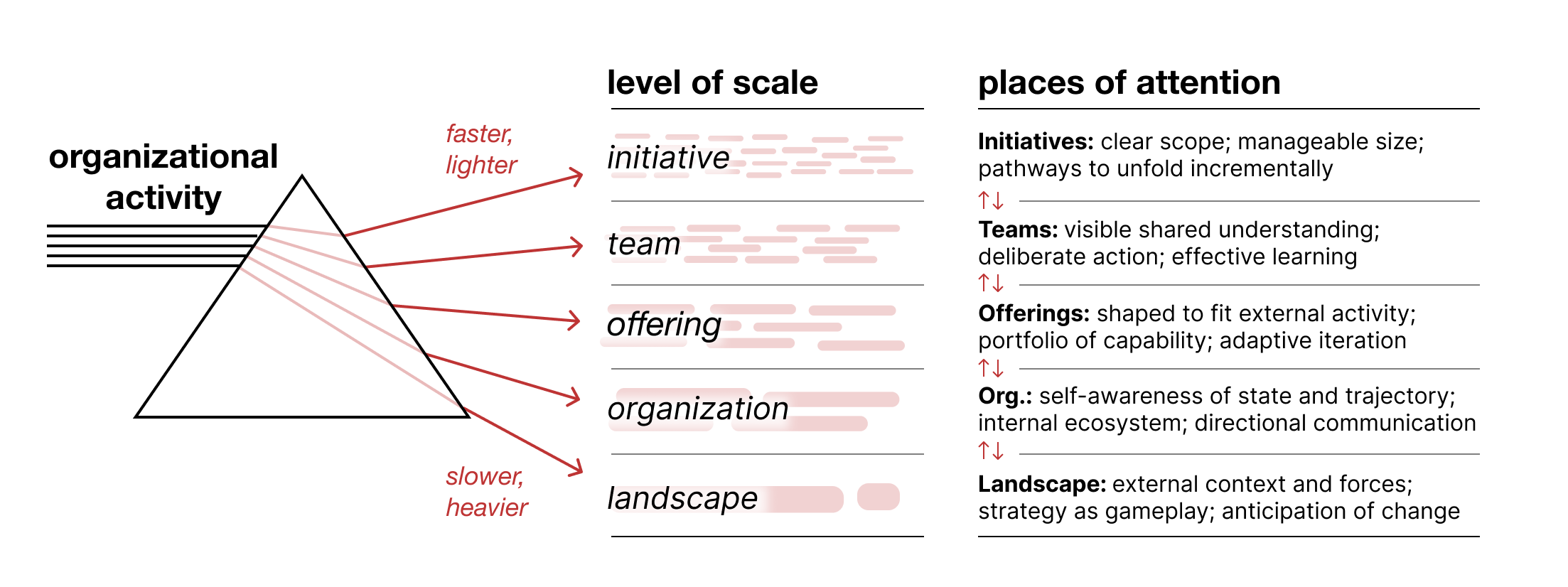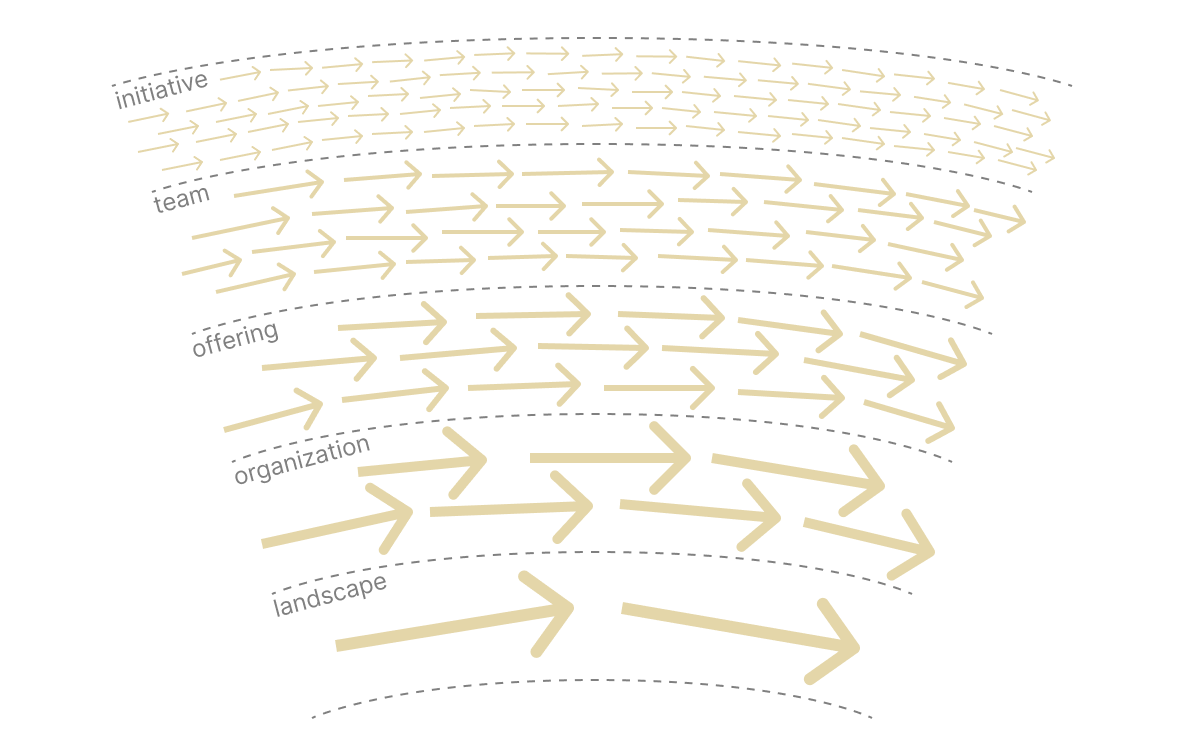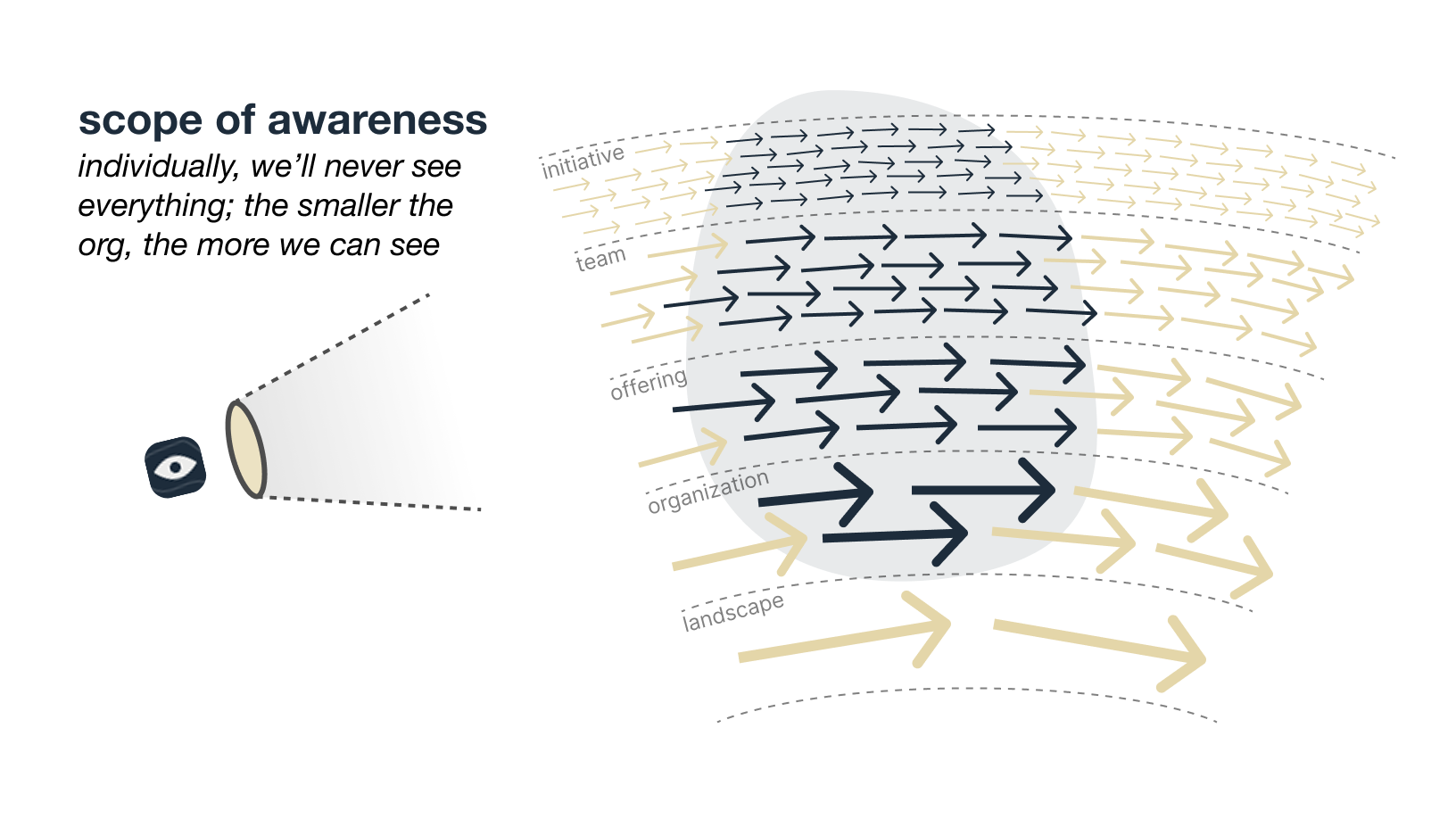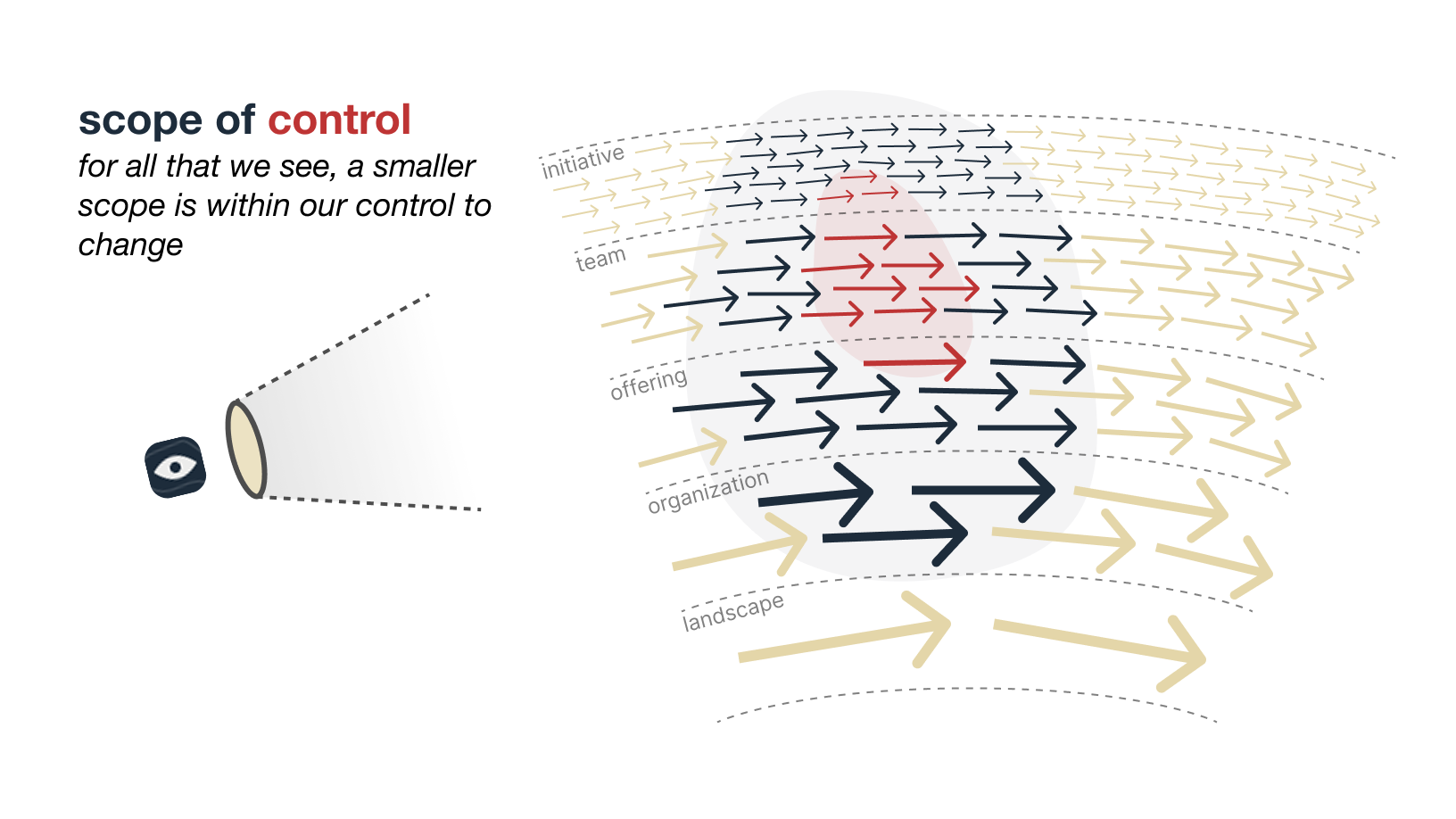We're building on last week's levels of scale. Those five levers were initially strategic levels of scale. I think it makes more sense to describe them as the bands of organizational activity that operate at different speeds and frequencies.

Before we talk about what's within our scope, let's redraw them further, using Stewart Brand's Pace Layers, as below.

Each level represents different kinds of organizational activities that operate at different frequencies. They're concrete and tangible, and the target of each activity is either existing organizational structure or the boundaries and operations of other, recurring activities.
Knowing what we can see
Our scope is finite — what we can see is limited. There are always people more connected to the existing structure than we are. There are always people more attuned to the patterns of existing activities and the forces that enable and constrain them.

We as an individual will never carry a working vision of the whole structure and the dynamics that operate in and around it. (Even as a one person enterprise, I'd argue, it's not possible to get a handle on the whole thing.)
We attune to those places where we spend the most of our attention and energy. We speak different languages and learn to shape different kinds of material at each scale. Slow-layer observation of a fast layer slows it down, while fast-layer engagement with a slow-layer must know the right timing and the right language to create leverage. A wise organization structures its slow layers with this in mind — to sense and amplify serendipity in the fast layers, instead of imposing a rigid cadence of administrative legibility.
Recognizing what we can control
Given what we're aware of and what we can see, what we actually control is a much smaller subset. This is as true for individuals as it is for teams. While it may feel limiting, the recognition is liberating.

The place to play is where we can actually play. By doing so well — finding what works, learning to act deliberately and respond — we can increase the area we understand, and the scope of our control. We can find new adjacent possibilities and pathways to shift the dynamics of levels outside of our starting point.
A remarkable amount of individual and organizational energy is poured into resisting what, for better or worse, we cannot change. It is helpful and healthy to maintain awareness of those dynamics we find difficult, damaging, or disastrous and how we we participate in them. It is unhelpful and unhealthy to imagine we can directly change what is outside of our control.
There's balance to found — we don't know what is within our control if we never try to change it. As our awareness and our skill grows, so will the scope of what we can change.
Other things of note
- I've repeatedly enjoyed two different talks from the Domain-Driven Design Europe 2018 conference. I did not attend or even know of its existence back then. I'm grateful the organizers put these talks online:
- Simon Wardley, Crossing the River by Feeling the Stones, DDDE 2018
- Dave Snowden, Complex Adaptive Systems, DDDE 2018
- I'll attend an Estuarine Mapping course this May in Barcelona, offered by Dave Snowden's Cynefin Co. — drop me a line if you'll be around!
Until next time—
This is Loops and Cycles, a mailing list exploring how we work together and make good things.


![Scope of Awareness and Control [LC22]](/content/images/size/w100/2025/05/scope-of-control-title.png)
